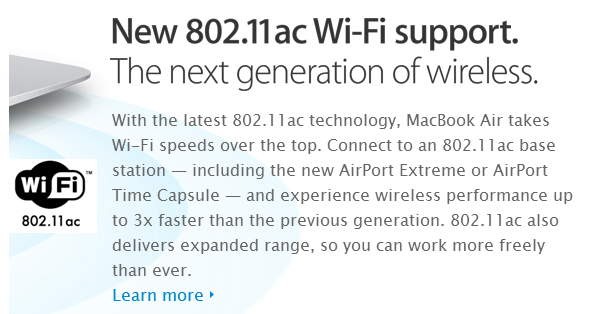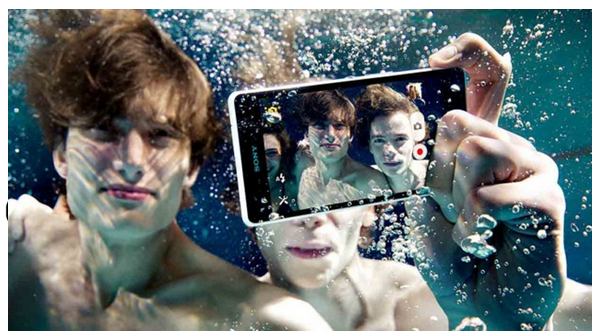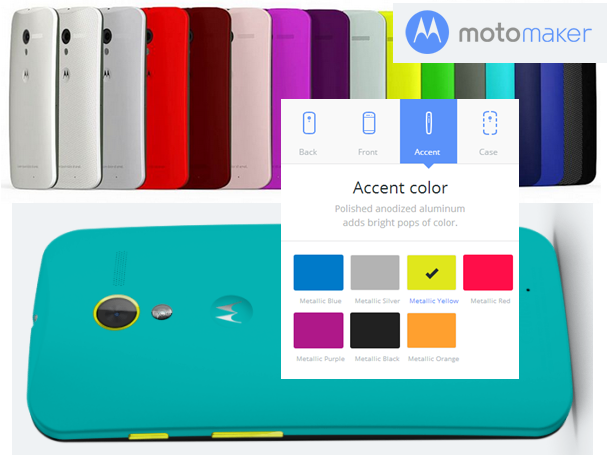What is the Best Smartphone of 2013?
September 29, 2013 Leave a comment
Last updated: January 20, 2014
Having a great smartphone is essential. That’s why I spend months trying to pick the best one every year. Of course “best” is a subjective term, so I create a chart of non-subjective things to help me see which phones stand out from the pack. I start with a chart that contains over fifty smartphones, and then narrow it down to the ten best ones. To save time, we’ll start with those phones. I present to you the top ten smartphones of 2013.
Narrowing the Field
Of course, one chart can’t tell you everything, that’s why this is only the first of several steps, but it is a great tool to help you narrow down your list to only one or two finalists. You’ll notice the winner in each category shown in bold-faced blue text, while phones that under perform are shown in red. Let’s jump right in and review the winners in each area starting with the mobile processor.

This chart shows category winners in blue and underperformers in red (click here to view an easier to read chart)
Best Processor
When it comes to processor speed, the Samsung Galaxy Note 3 wins by a nose. It has a third-generation quad-core processor running at an incredible 2.3GHz. However, processor speed isn’t the only indicator of performance. The type of processor, number of cores and architecture type matters as well. The Galaxy Note 3, Sony Xperia Z1/Z Ultra, LG G2 and Acer Liquid S2 all have a Snapdragon 800 processor which has four Krait 400 cores, an Adreno 330 GPU, a Hexagon DSP, 802.11ac Gigibit Wi-Fi, HSPA+, CDMA, LTE radios and more. The Asus Padfone, HTC One and Samsung Galaxy S4 all have a Snapdragon 600 processor which has four Krait 300 cores running at a slower clock speed with a Adreno 320 GPU. Although this is still a great processor, it can’t keep up with the Snapdragon 800. Although the iPhone 5s has a dual-core processor that runs at a much slower clock-speed, it’s no slouch and even outperforms the Snapdragon 800 on a few graphic benchmarks. However, this has more to do with the fact that the best Android phones have almost three times more pixels to push around than the iPhone 5s. Also, dual-core processors often get better benchmark scores because most benchmarks are not highly multithreaded. Even when you’re not running a single app, your phone is still doing a lot of things in the background. Because of this, a quad-core processor has advantages over a dual-core processor.
Winner: Samsung Galaxy Note 3
Most Storage
When it comes to storage, three things matter. The amount of of RAM, the amount of internal storage and the memory expansion capabilities. The Galaxy Note 3 is the only phone with 3GB of high-speed RAM today. This makes it boot faster, launch apps faster and multitask better. How much faster? The game “Asphalt 7” loads more than twice as fast on Galaxy Note 3 with 3GB of memory than it loads on the same phone with only 2GB of memory (18.5 seconds vs. 45.0 seconds). The Galaxy Note 3 also runs its memory at a higher speed than all other phones. The iPhone 5s only has 1GB of memory, which is surprising because it has a 64-bit OS that would benefit greatly if it had more memory.
When it comes to internal storage the Asus Padfone Infinity and Samsung Galaxy Note 3 win in because both have either 32GB or 64GB of storage. Other phones like the iPhone 5s start at only 16GB of storage. Having double the amount of internal storage allows you to store more than twice as many photos, movies and apps.
A memory expansion slot is important because it allows you to convert your 32GB phone to 64GB phone for less than $25. For comparison purposes, Apple forces you to buy a new phone that costs $100 more to expand your storage from 16GB to 32GB. 64GB Android users with a memory slot can expand their storage to 128GB for less than $50. This is something that is simply not possible with the iPhone 5s. All of the phones in the above chart except the iPhone 5s, Padfone Infinity, HTC One and Droid MAXX have a memory expansion slot.
Winner: Samsung Galaxy Note 3
Best Display
Four things matter when it comes to the display: Screen size, number of pixels, pixel density and screen accuracy. Three of our finalists have very large displays. The Galaxy Note 3 is 5.7″, the Acer Liquid S2 is 6.0″ and the Sony Xperia Z Ultra towers above the rest at 6.4″ I’ve used the Sony Xperia Z Ultra and was surprised how good it felt my hand. Although it fit into the front jean pocket, I’m not sure I’d want to carry a phone that big all of the time. Whether these three phones are too big for you is subjective, what isn’t debatable is the fact that large screens are better for ever application. It doesn’t matter whether you’re surfing the web, playing a game, watching a video, or using Facebook. You’ll have a much better experience on a phone with a larger screen. Once you have a smartphone with a large screen, I believe it’s unlikely you’ll even go back to a phone with a smaller display.
In addition to size, the number and type of pixels is also important. All of the best Android phones have screens with at least a 1280×720 pixels. The best Android phones have screens with 1920×1080 pixels. This makes sense since most movies and TV shows are either 720p or 1080p. For some strange reason, Apple has yet to release a phone with a true high-definition display. All of the 1080p Android phones here have almost 3 times more pixels than the iPhone 5s (2,073,600 pixels vs. 727,040 pixels).
Of course quality is more important than quantity. Screen resolution (or the number of pixels per inch) used to be an area that Apple excelled in. But now, the iPhone 5s comes in next to last place in screen resolution. That’s surprising. The winner in screen resolution is the HTC One, with an incredible 469 pixels-per-inch.
It’s worth mentioning there is a debate whether pixel resolutions above 300 pixels-per-inch are needed however, experts say can see tell the difference between a 300 ppi display and a 500 ppi display. There is a downside too, the more pixels you have to push around the more power is consumed and the harder it is to get the highest frame rates on games.
Screen quality isn’t just about the number of pixels, screen type and accuracy is important as well. The is one area Apple has dominated in the past, but Android phones like the Samsung Galaxy Note 3 and Samsung Galaxy S4 are now matching the iPhone 5s’ “A” overall display rating and badly beat the iPhone 5s when it comes to black level, contrast ratio, color saturation and more. In fact, BGR says the Samsung Galaxy Note 3 has the best display of any other phone in 2013. The HTC One and LG G2 also beat the iPhone 5s when it comes to both contrast ratio and black levels. When it comes to color accuracy, the iPhone 5s continues to do well, but the Samsung Galaxy S4 outperforms the iPhone 5s on the important GMB color checker. The Moto X and LG G2 also beat the iPhone 5s on white and gray-scale accuracy. The HTC One X even beats the iPhone 5s on brightness (although only by a small amount).
Screen Size Winner: Sony Experia Z Ultra
Screen Resolution Winner: HTC One
Screen Accuracy Winner: iPhone 5s
Best Overall Display: Samsung Galaxy S4/Samsung Galaxy Note 3
Best Camera
Deciding which of these phones has the best camera isn’t easy. When it comes to overall quality, most experts say the Nokia Lumia 1020 has the best camera (even though it wasn’t good enough to occupy a slot in the above chart). It has a 41MP PureView camera; Carl Zeiss Tessar lens; f/2.2 aperture and is the only camera with a Xenon flash. Although the iPhone 5s and HTC One cameras can’t compete when it comes to megapixels, both have sensors with larger pixels that works better than other Android phones in low-light. Although the 20.7MP Sony Xperia Z1 and 13MP Samsung Galaxy S4 and Galaxy Note 3 also have cameras that are very good, most experts rank the camera in the iPhone 5s second after the Nokia Lumia 1020. When it comes to the front camera, every phone here beats the iPhone’s 1.2MP camera.
When it comes to taking video, the Samsung Galaxy Note 3 and Acer Liquid S2 can both record and playback Ultra HD 4k video with four times the resolution of HD video. This may not seem like an essential feature today, but it is useful because I was surprised to see you can easily tell a difference between a standard 1080p HD video and an Ultra HD video — even when they are both played on a 1080p display. The differences will be even more apparent as consumers get 4k TVs in their homes.
Winner: Nokia Lumia 1020

Apple raves about 802.11ac in their MacBook and router ads, yet chose to left it out of the iPhone 5s
Best Connectivity
When it comes to connectivity every phone here has comparable 2G/3G and 4G LTE capabilities. Every phone here also has both 2.4GHz and 5.0GHz 802.11n Wi-Fi support. But that’s no longer cutting edge. All of the phones here — except for the iPhone 5s have support for Gigibit Wi-Fi (also know as 802.11ac). Apple raves about 802.11ac in their MacBook and router ads because it’s 3-10x faster than regular 802.11n Wi-Fi technology. This is important because your phone is connected to Wi-Fi most of the time at home and in the office. When used with a router with 802.11ac support, you’ll experience faster downloads, faster page loads and less video buffering. How much faster? The best Android phones have Wi-Fi that is 3 to 10 times faster than the iPhone 5s.
Winner: Everyone but the iPhone 5s
Best I/O
When it comes to I/O two main things matter: transfer speeds and cable costs. Both SuperSpeed USB 3.0 and Thunderbolt are much faster than USB 2.0 support that is offered by all non-Apple smartphones. The problem with Thunderbolt is that there are very few non-Apple products that support it and the few that do tend to be very expensive. USB 3.0 is backwardly-compatible with standard mini-USB cables that can be purchased for up to 20 time less than what Apple charges. Even high-quality USB 3.0 cables cost one third as much as Apple’s cheapest Thunderbolt cable. Since 99% of iPhone users only use their $29 to $39 Thunderbolt cables for charging, that’s a big premium to pay — especially considering the fact you can get an Android charging cable for only $2-$3. Only one mobile device here has support for USB 3.0. That makes it easy to pick a winner for this category.
Winner: Samsung Galaxy Note 3
Best Case
When it comes to the exterior of your phone, the build-quality, thinness and weight matter. Customization is also important. The build-quality leaders today are the iPhone 5s and HTC One. When it comes to thinness, the Sony Xperia Z Ultra comes in first. It’s only 6.5mm thick, compared to the iPhone 5s at 7.6mm. The tables turn when it comes to weight however, the iPhone 5s is the lightest smartphone available in the U.S. weighing in at only 112g, while the Sony Xperia Z Ultra is the heaviest (212g). When it comes to phone customization, the Moto X (not shown in the chart) is an easy winner with over 2000 customization options.
Winner – Build-quality: Tie: Apple iPhone 5s and HTC One
Winner – Thinness: Sony Xperia Z Ultra
Winner – Weight: Tie: Apple iPhone 5s
Winner – Customization: Motorola Moto X (not listed in the chart above)
Best Battery
The iPhone 5s only has 1560 mAh battery. Phones like the Acer Liquid S2, LG Optimus G Pro, Motorola DROID MAXX and Samsung Galaxy Note 3 have batteries that are at least twice as powerful as the battery in the iPhone 5s. The Samsung Galaxy S4 retained its title as winner of the highly-regarded UK consumer association battery tests, but even it can’t compete with the Motorola DROID MAXX and LG G2. According to Engadget, “the Maxx died after 18 hours and 54 minutes” of real-world use. Engadget said the talk time on the Droid Maxx lasted for 24 hours and 15 minutes. Engadget added, “these numbers are great, but does it hold the title for longest battery life in the market? We would have said yes until this past week, when we discovered that the LG G2 — with its smaller, 3,000mAh battery — actually lasts longer in real-world use and our standard video rundown test.” For more about battery life checkout this list of the six phones with the best battery life.
Winner – Battery life: LG G2
And the Winner is…
Best is a subjective term. What I’m really talking about here is the smartphone with the best overall hardware specs. Based on that definition, neither the iPhone 5s or Samsung Galaxy S4 can be considered “phone of the year.” Both are good phones, and both are very popular, but they are not the most advanced smartphones that are available today. In fact the iPhone 5s is missing more than fifty features that you’ll find in other smartphones. So who is the gold medal winner? Right now it’s the Samsung Galaxy Note 3. But phones this large aren’t for everyone. If you own a Mac, and an iPad and many apps, an iPhone 5s still might make sense for you — even though it comes in last place in most of the categories reviewed here. If you’re looking for great performance and value, I’d consider the Nexus 5, Moto X or HTC One which is a bargain these days. The bottom line is you can’t go wrong with any of the phones here.
– Rick
Copyright 2013-2014 Rick Schwartz. All rights reserved. Linking to this article is encouraged.
Follow me on Twitter @mostlytech1

























